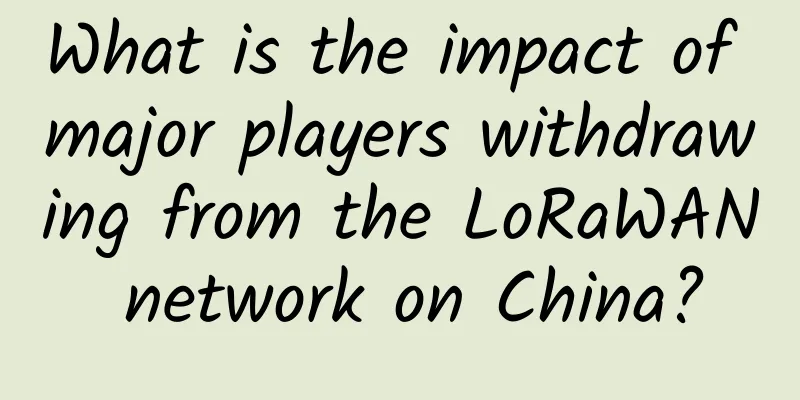Wi-Fi 6 is just being used, and Wi-Fi 7 from the three major players is already on the way

|
The latest generation of Wi-Fi technology, Wi-Fi 6, has just begun to become popular, and the next generation of Wi-Fi technology has already begun research and development, with the speed expected to increase by 3 times.
Qualcomm Snapdragon 865 is one of the first mobile phone SoCs to support Wi-Fi 6. So with the launch of mobile phones equipped with Snapdragon 865 and other mobile phones that support Wi-Fi 6, this new connection technology has begun to spread rapidly. At the same time, there are more and more wireless routers that support Wi-Fi 6. Now, we are waiting for the next generation of Wi-Fi technology, which should be called Wi-Fi 7. It is understood that the three major chip giants - Qualcomm, Broadcom and MediaTek are already developing related technologies, but this latest Wi-Fi technology will not be used soon. Qualcomm expects that the launch of this technology will take at least 2-3 years. Recently, Qualcomm Vice President Rahul Patel pointed out that Qualcomm has launched and mass-produced multiple Wi-Fi 6 products in the past two years, which are widely used in smartphones, PCs, and routers. Wi-Fi 6E products have also been mass-produced since the second half of last year. Qualcomm has already started the research and development of Wi-Fi 7. Qualcomm predicts that Wi-Fi 7 will double network speeds compared to Wi-Fi 6. Wi-Fi 7 can also combine multiple spectrums, which should mean higher-quality connections, but again, this isn't going to be widely available anytime soon. In addition to Qualcomm, chip companies such as Broadcom and MediaTek are also actively developing Wi-Fi 7 chips. In this year's shareholder report, chip manufacturers stated that they have begun to actively invest in the next generation of Wi-Fi 7, and the battlefield has extended from smartphones and PCs to more fields. For the entire mobile communications industry, this is undoubtedly a healthy competition. By the way, Wi-Fi 7 is likely to be the commercial name of the future 802.11be standard. Compared with the maximum 8 data streams of Wi-Fi 6, Wi-Fi 7 will support 16 data streams and CMU-MIMO technology. Among them, C stands for Coordinated, which means that the 16 data streams may not be provided by one access point, but by multiple access points at the same time. Secondly, Wi-Fi 7 will continue to support the 6GHz band, and the three bands can be connected and work simultaneously, expanding the width of a single channel from 160MHz of Wi-Fi 6 to 320MHz. Wi-Fi 7 also upgrades the signal modulation method to 4096QAM to have a larger data capacity. Therefore, the final speed of Wi-Fi 7 can reach 30Gbps, which is three times the speed of the fastest Wi-Fi 6 currently launched at 9.6Gbps. This article is reproduced from Leiphone.com. If you need to reprint it, please go to Leiphone.com official website to apply for authorization. |
>>: 5G technology can now read human emotions in public areas
Recommend
PTC acquires next-generation application lifecycle management company
PTC (NASDAQ: PTC ) today announced that i...
Screen unlocking technology + 48MP ultra-wide-angle AI triple camera, Huawei Enjoy 10S in-depth review
I don’t know when it started, but when people men...
The intelligent combination of 5G technology and artificial intelligence
5G and AI can find solutions to unsolved problems...
Ministry of Industry and Information Technology: The Chinese government is resolute in protecting personal information
[[384493]] Yesterday morning, the State Council I...
Taking stock of Internet companies that have deployed blockchain: Is blockchain a "panacea" or a "scam"?
Bitcoin was launched in 2009. As the price of Bit...
China Telecom will commercialize 5G independent networking in more than 300 cities
On November 7, Li Zhengmao, general manager of Ch...
The most beautiful ecosystem is on the road. Huawei China ICT Ecosystem Tour 2018 demonstrates the "power of walking"
[51CTO.com original article] At the end of May, t...
The importance of China building 5G networks ahead of the United States
China may build a 5G network before the United St...
Can IPTV also have a nationwide network?
IPTV is good, everyone knows it! The number of IP...
I am confused. If I want to store IP addresses, what data type is better?
When it comes to IP addresses (IPv4), common IP a...
Manufacturers begin to correct mistakes, is 5G adjusting its direction?
It has been more than two years since the country...
What two points should you pay attention to when choosing a network cable?
Network cable, as the name implies, is the cable ...
Understanding UWB Ultra-Wideband Technology in One Article
"Point and hit" is often used to descri...
LOCVPS: Los Angeles VPS 40% off, 1G memory, 30G hard disk, 400GB monthly traffic starting from 22.2 yuan per month
LOCVPS is a Chinese VPS service provider founded ...
What is the use of airplane mode? What will happen if you don't turn it on when flying?
Everyone knows that when flying, you should turn ...









